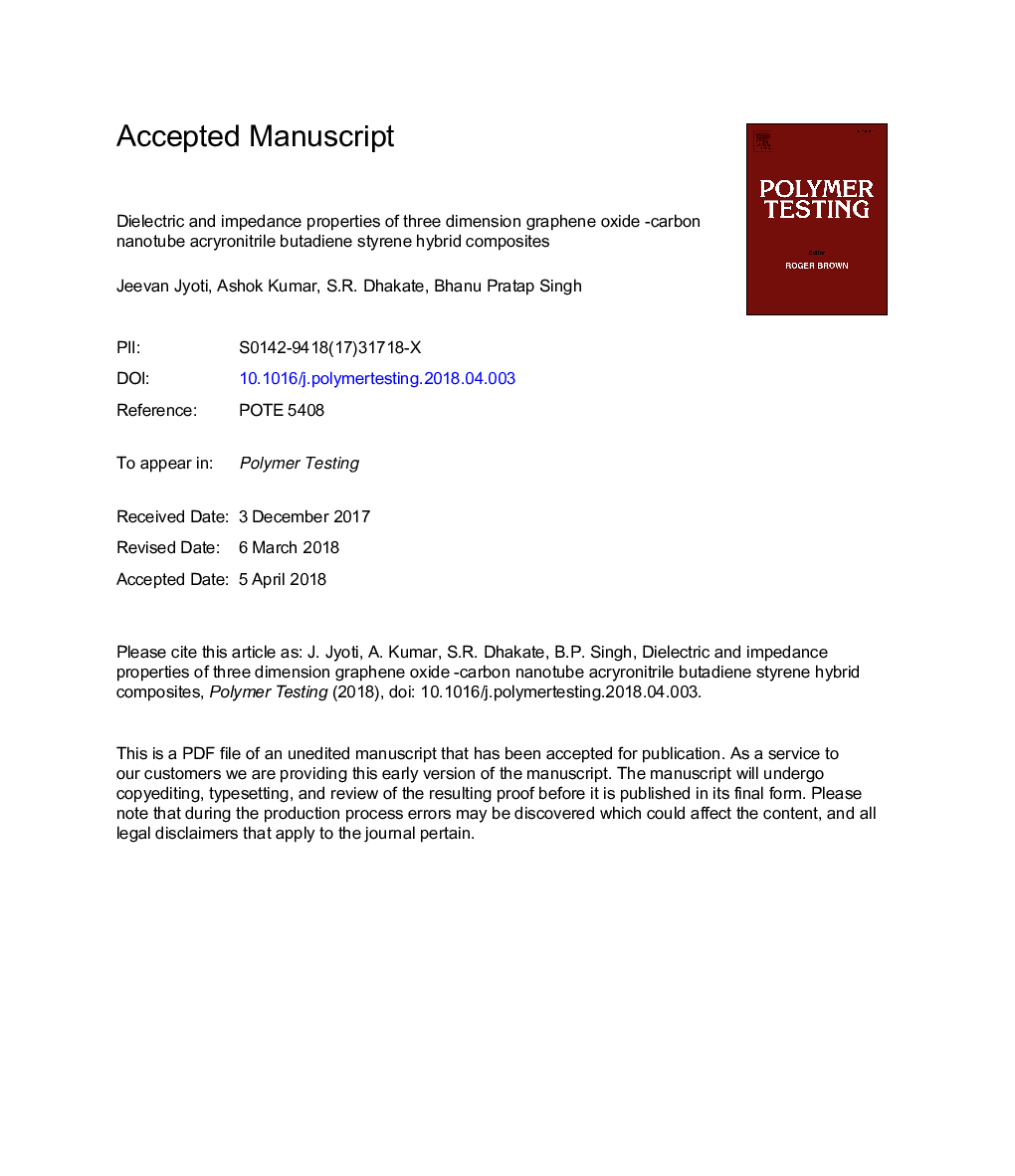| Article ID | Journal | Published Year | Pages | File Type |
|---|---|---|---|---|
| 7825086 | Polymer Testing | 2018 | 29 Pages |
Abstract
In this work, comparison of dielectric and impedance studies of multi-walled carbon nanotube (MWCNTs), graphene oxide-carbon nanotube (GCNTs) reinforced acrylonitrile-butadiene-styrene (ABS) composites prepared by twin-screw extruder with back flow channel have been carried out. The dielectric relaxation and impedance behavior of these polymer composites have been studied with varying wt. % of MWCNTs and GCNTs reinforced ABS matrix in the frequency range of 102-106â¯Hz. The results showed that the real part of the impedance of the composites with MWCNTs content of 7â¯wt % or higher exhibits frequency independent behavior at the low-frequency region, and GCNTs-ABS demonstrates frequency dependent. Also, the relaxation time decreases with increase in wt. % of carbon nanofillers due to the formation of an interconnecting path within the polymer matrix. The Nyquist plots for MWCNTs-ABS composites showed the appearance of a single semicircular arc, whose radius of curvature decreases with increase in MWCNTs loading, suggest the decrease in overall impedance of the composite with high amount of filler loading. The radius of arc in impedance spectra decreases with increasing the percentage of fillers indicating the occurence of conducting behavior. In GCNTs-ABS composites Nyquist plots showed the appearance of a single straight line. The dielectric responses of MWCNTs, GCNTs reinforced ABS composites were investigated. The dielectric constant of MWCNTs-ABS composites gets enhanced significantly with addition 0 to 3â¯wt % MWCNTs. Room temperature AC conductivity increased with increase in the wt. % of MWCNTs and GCNTs from 10â12â¯S/cm for the unfilled polymer to 10â5â¯S/cm for 10â¯wt % of MWCNTs-ABS and 10â7â¯S/cm for 10â¯wt % of GCNTs-ABS composites. The decrease in impedance and enhancement of dielectric properties were due to the interfacial polarization between MWCNTs and ABS. Improved conductivity of MWCNTs-ABS and GCNTs-ABS composites may be useful in electromagnetic interference (EMI) shielding and antistatic materials.
Keywords
Related Topics
Physical Sciences and Engineering
Chemistry
Organic Chemistry
Authors
Jeevan Jyoti, Ashok Kumar, S.R. Dhakate, Bhanu Pratap Singh,
